Social Media Advertising 101: How to Maximize Your Ad Budget
Learn how to use social media advertising to achieve real business results and get the most out of your ad budget.
Social media advertising is a must if you’re looking to reach a new, targeted audience ASAP.
Like it or not, organic reach is getting increasingly hard to achieve: to be honest, the days of going viral without a little boost just might be over.
We totally get that it can be scary to move from an organic social strategy to spending (gulp) real money to achieve reach. Understanding all your options is vital to make sure you’re getting the most bang for your buck — and working towards the social media goals that matter to you and your brand.
That’s why we’ve put together this extremely comprehensive guide to explain how to use each unique type of social media advertising to achieve real business results. Read on to learn just how to make every dollar you spend advertising on social media count.
Bonus: Download a free guide to social advertising and learn the 5 steps to building effective campaigns. No tricks or boring tips—just simple, easy-to-follow instructions that really work.
Social media advertising is a type of digital advertising. It refers to the practice of spending money to deliver content to a target audience on your preferred social media platform.
The number of people who see your social media ads is referred to as your “paid reach.” This is in contrast to your “organic reach,” which refers to people who view content distributed by the algorithm free of charge. And obviously, when you pay to get your content out there, you have a much higher chance of connecting with the right people.
That’s because advertising on social is a hyper-direct way to reach the audience you want. No need to cross your fingers or pray to the astrology gods that you’ll create a viral post: you can pay to make sure your amazing content gets some eyeballs on it.
Social advertising allows you to target brand-new customers or returning ones. (New friends! Hooray!) It’s also a chance to do some hands-on A/B testing.
The downside, obviously, is that it’ll cost you at least a few bucks… but all the social platforms offer really flexible rates to suit every type of budget. If you’ve got a fiver on hand, you’ve got everything you need to dabble in social media ads. (More on just how much social media advertising costs below!)
All the major social networks offer advertising options, but that doesn’t mean you should use all of them.
When choosing where to place your ads, it’s helpful to know which networks are most popular with your target audience. Where is your target group most engaged, most concentrated and most accessible?
Targeting teens? TikTok is where to find them. Moms, meanwhile, love Facebook.
Try looking at which social networks perform well organically for your brand. Where does your content naturally strike a chord with fans? This is an obvious choice for your first social ad campaigns.
Here’s a quick summary from the Pew Research Center’s most recent social media fact sheet. It shows a great snapshot of the preferred platform of different demographics.
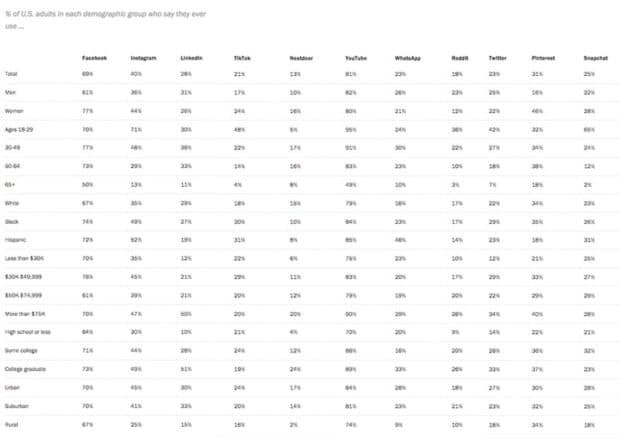
Source: Pew Research Center
Once you have a sense of which social networks might be best for your business, let’s take a look at each network’s ad types.
Mục Lục
Facebook ads
Facebook ads help you achieve one of six broad types of campaign objectives:
- Awareness
- Traffic
- Engagement
- Leads
- App promotion
- Sales
Like Instagram, Facebook ads appear throughout the app, including in users’ feeds, Stories, Messenger, Marketplace, and more. They look similar to normal posts but always include a “sponsored” label to show they’re an ad. Facebook ads include more features than regular posts, like CTA buttons, links, and product catalogs.
Audience considerations: Facebook is popular across many demographics, with 2.91 billion monthly active users. While millennials are the most active demographic, teenagers, Gen Xers and even senior citizens are hanging out there, too.
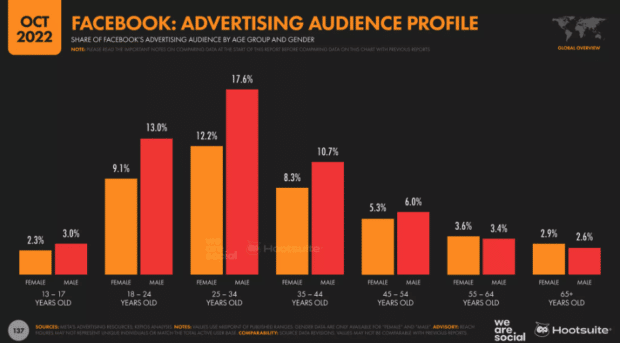
Source: Hootsuite Digital Trends Report
With detailed targeting options for this huge pool of users, Facebook is a great platform to get started with social media advertising.
Here are the different styles of ads available as options on Facebook in 2022.
Image
Image ads are Facebook’s most basic ad format. They let businesses use single images to promote their products, services, or brand. Image ads can be used across different ad types, placements, and aspect ratios.
Pro tip: Pay attention to image ad specs and ratios, so your product doesn’t get cut off or stretched.
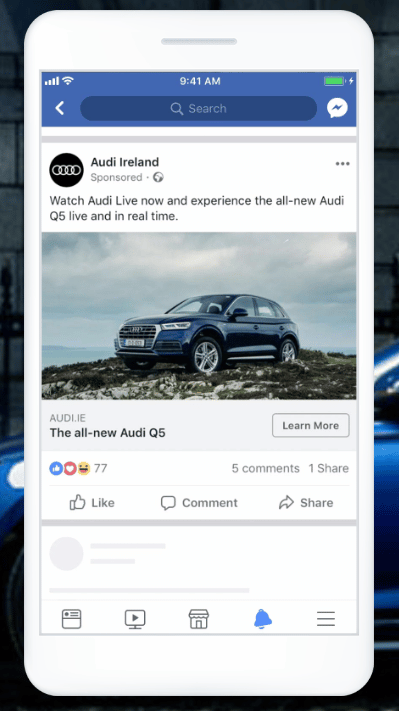
Source: Facebook
Video
Just like image ads, video ads on Facebook let businesses use a single video to showcase their products, services, or brand. They’re especially helpful for product demos, tutorials, and showcasing moving elements.
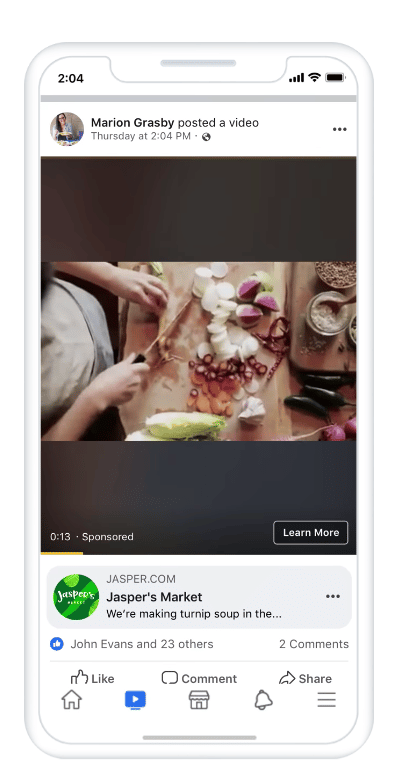
Source: Facebook
Carousel
Carousel ads showcase up to ten images or videos that users can click through. Each has its own headline, description, or link.
Carousels are a great choice for displaying a series of different products. Each image in the carousel can even have its own landing page specifically built for that product or service.
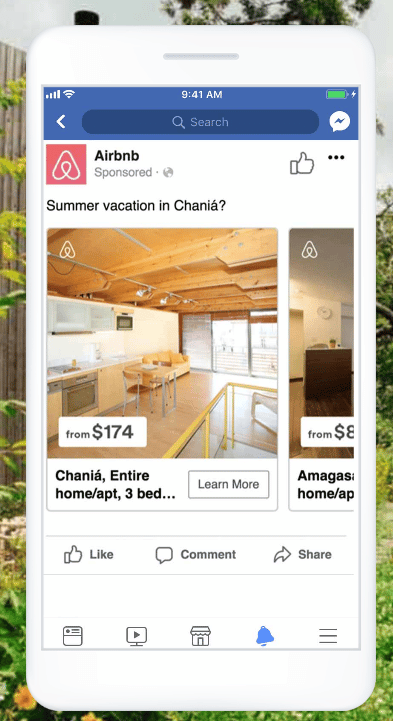
Source: Facebook
Playables
Playable ads are an opportunity to offer viewers an interactive experience and preview before they download.
Think of it as a try-before-you-buy option: it’s a good one to use if you’re selling a game, app, or other digital tool or experience.
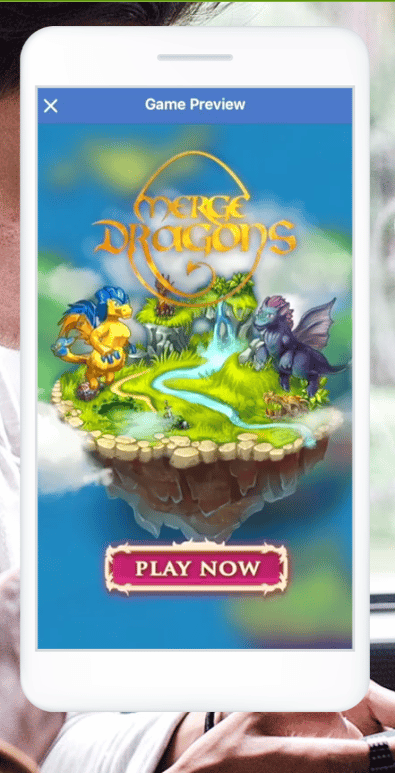
Source: Facebook
Collection
Collection ads are mobile window-shopping experiences that allow users to flick through your product lineup. They’re kind of like immersive carousels — just full-screen and more customizable. Users can purchase products directly from Collection ads.
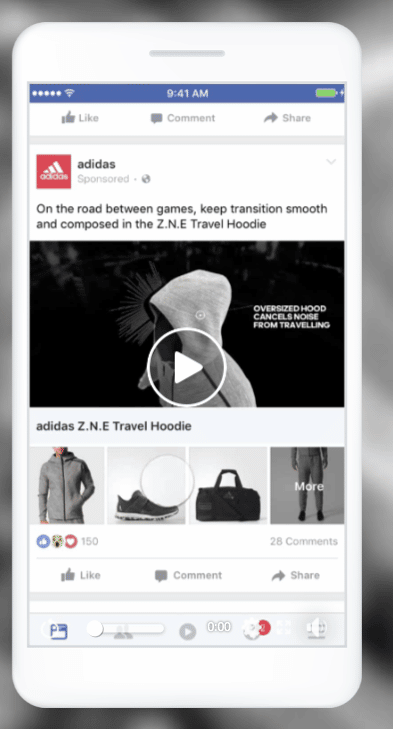
Source: Facebook
Slideshow
Slideshow ads are composed of 3-10 images or a single video that plays in a slideshow. These ads are a great alternative to video ads because they use up to five times less data than videos.
Slideshow ads are also a great way for people without video-making experience to get started.
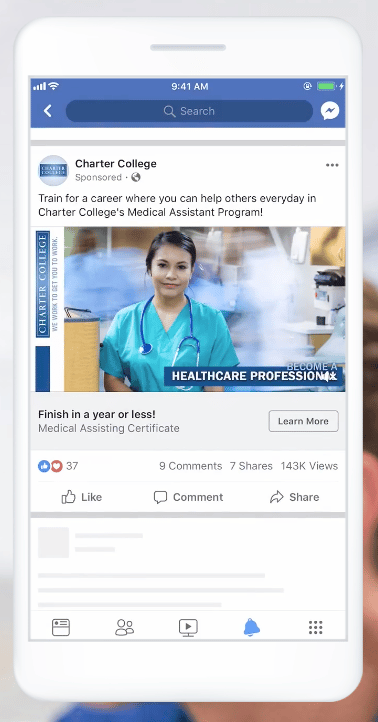
Source: Facebook
Stories
Stories ads are a mobile-only full-screen vertical video format that allows you to maximize screen real estate without expecting viewers to turn their screens sideways.
Stories can be made up of Images, videos, and even carousels.
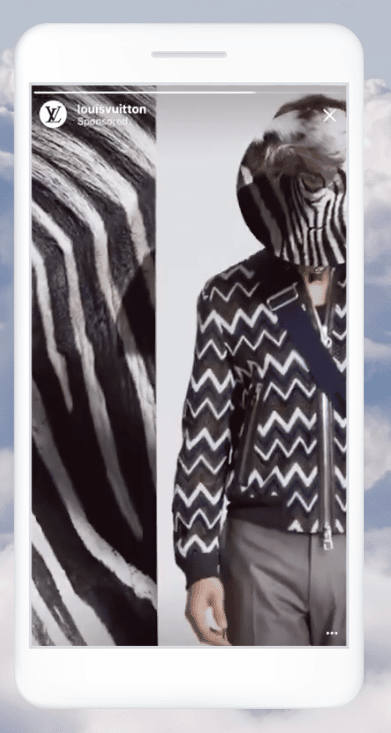
Source: Facebook
Messenger
Messenger ads show up in Facebook’s messenger tab. Since it’s where people spend time chatting with friends and family, Messenger ads can feel more personal than scrolling through Image or video ads.
People see your Messenger ads among their conversations and can tap to start a conversation with your brand.
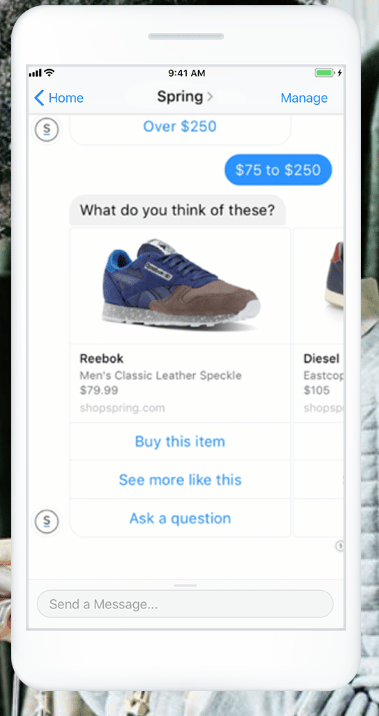
Source: Facebook
For more detail on each of these Facebook ad types and how to post ads on Facebook, head over to our guide to How to Advertise on Facebook.
Instagram ads
Facebook owns Instagram. So it’s not surprising that Instagram ads support the same six broad categories of campaign objectives as Facebook ads:
- Awareness
- Traffic
- Engagement
- Leads
- App promotion
- Sales
Audience considerations: Instagram is most popular with millennials, though plenty of Generation Z and Gen Xers also use the platform. You’ll find far fewer boomers and seniors here than on Facebook, though.
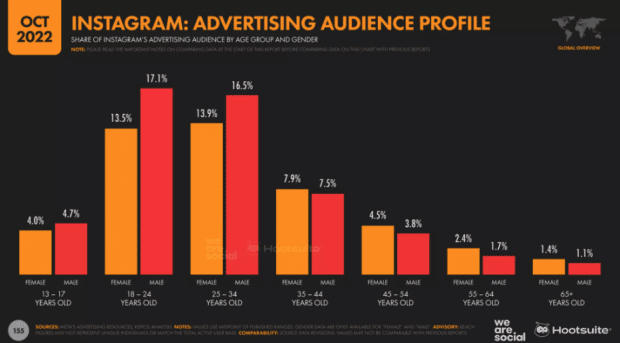
Source: Digital Trends 2022
Like Facebook, you can target your ideal viewer with custom targeting options. You can also create lookalike audiences and define your audience’s behaviors and activities, interests, and demographics.
Ads appear in users’ Feeds and Stories alongside content they follow organically. Instagram ads might also show up in Explore and the Instagram Shop browsing experience. Regardless of where they appear, all Instagram ads feature a “sponsored” icon and might include a call-to-action button, too.
Here are the different styles of Instagram ads you have to choose between.
Boosted posts
Your Instagram photo or video will look like a regular Instagram post, except it will say “Sponsored” in the top left. Depending on your campaign objective, you may also be able to add a call-to-action button.
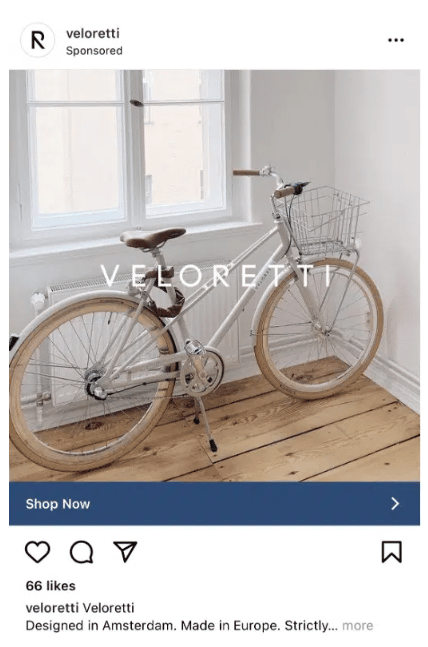
Source: Instagram
Carousel
In an Instagram carousel ad, viewers swipe to scroll through different images.
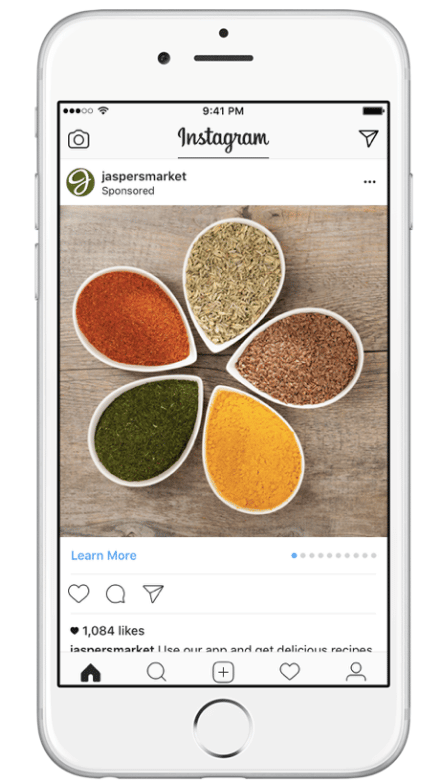
Source: Instagram
Instagram Stories
Instagram Stories ads can use photos or videos up to 120 seconds long. These ads display in full-screen format between people’s stories.
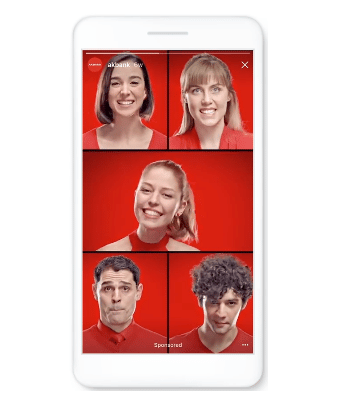
Source: Instagram
Reels
Instagram really wants Reels to take off, so their algorithm heavily favors video posts these days. Dropping a boosted Reel into the Insta-verse will probably get you a double dose of paid reach and organic reach.
Just like a traditional Reel, ad Reels loop and can be up to 30 seconds in length. Ad Reels can also receive comments, likes, shares and saves and appear everywhere regular Reels do (in-feed, on the Reels tab and in Explore).
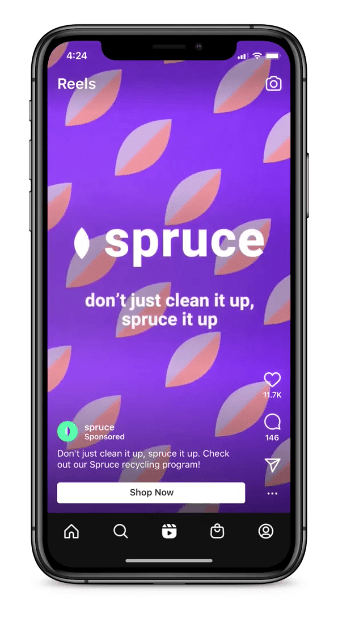
Source: Instagram
Instagram Shop
This option allows you to advertise your Instagram Shop on the Instagram Shop tab homepage. Your hero image will appear as a tile among other shopping content. Users can click on your product to learn more on the product details page.
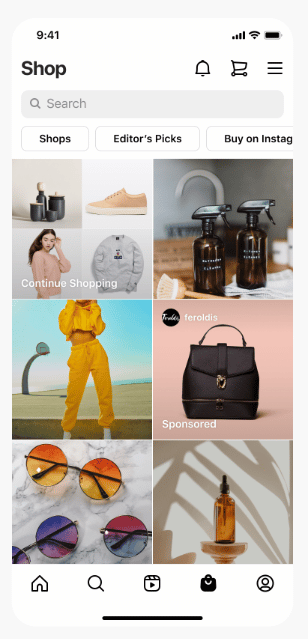
Source: Instagram
Read more about Instagram Ads in our guide to Instagram Advertising.
Twitter ads
Twitter ads support three different business objectives:
- Awareness: Maximize the reach of your ad.
- Consideration: Whether you want video views, pre-roll views, app installs, web traffic, engagement or followers, this is your category.
- Conversion: Bring users to your app or website to take action.
Audience considerations: Nearly two-thirds of Twitter’s advertising addressable audience is male.
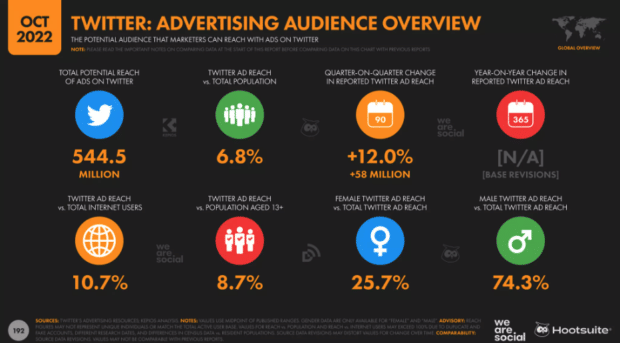
Source: Hootsuite Digital Trends Report
Learn more about Twitter Ads here.
Promoted Ads
Formerly known as Promoted Tweets, Promoted Ads on Twitter look a lot like regular Tweets — they can be images, videos, carousels, moments or text-only ads. Advertisers pay to display their content to people who don’t already follow them on Twitter.
Like ordinary Tweets, they can be liked, retweeted and commented on. But they are labeled as an ad: they will always say “Promoted” in the lower left-hand corner.
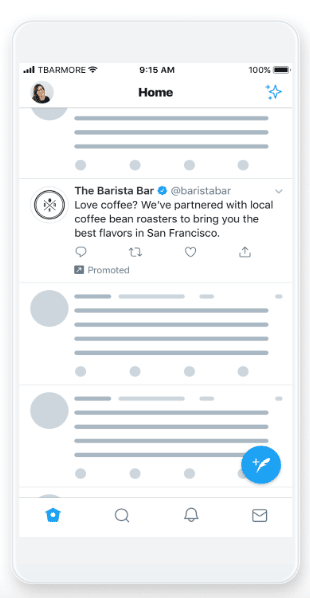
Source: Twitter
Follower Ads
Formerly known as Promoted Accounts, this type of Twitter ad allows you to promote your brand’s entire Twitter account. It targets users who don’t follow your brand and can help grow your business’s Twitter following.
Follower Ads are displayed in potential followers’ timelines. The ad will also show in the Who to Follow suggestions and search results.
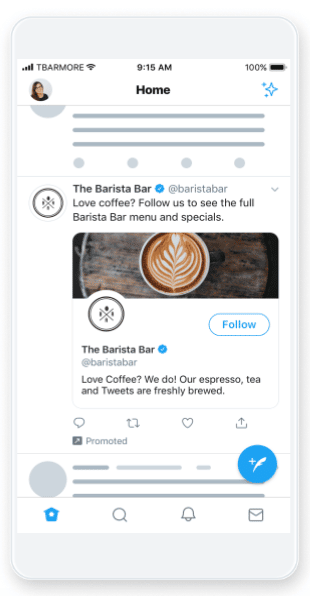
Source: Twitter
Amplify
Twitter Amplify Pre-roll allows your brand to place ads that appear before video content from 15+ categories of pre-screened brand-safe publishers.
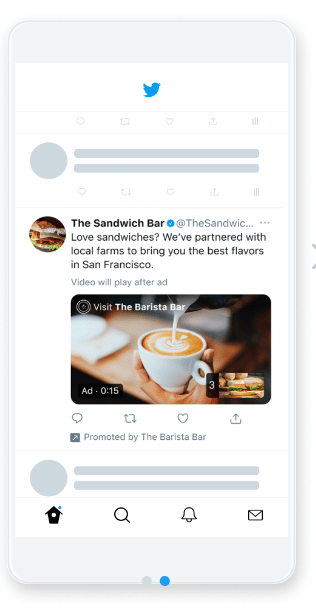
Source: Twitter
Takeover
There are two different types of Twitter Takeover.
Trend Takeover allows brands to place a sponsored ad in the What’s happening section of the Twitter homepage and the Trending tab on the Explore screen.
Timeline Takeover, meanwhile, is an ad that appears at the very top of a user’s timeline when someone opens Twitter for the first time of the day.
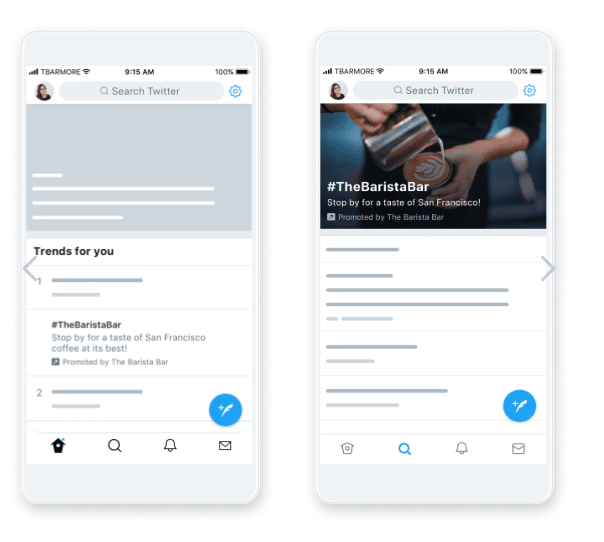
Source: Twitter
Twitter Live
Twitter Live is available for free to any Twitter user, but a paid Twitter Live helps brands maximize their reach.
This is a great option for conferences, product launches or anytime you’ve got a big moment you want to share with the world.
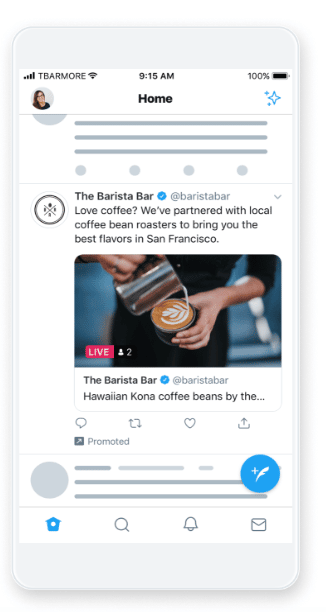
Source: Twitter
Additional branding opportunities
Polls, hashtags, and more are all available for the discerning Twitter shopper. Branded hashtag ads, for instance, allow you to add a visual component, like an emoji, that automatically appears when someone uses your hashtag.
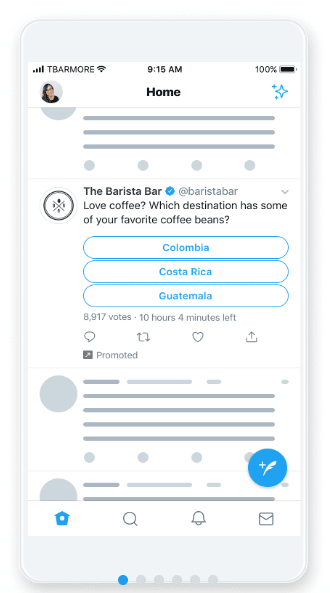
Source: Twitter
Of course, this all just scratches the surface. For a deeper dive into advertising on Twitter, click here.
Snapchat ads
Snapchat ads can help you achieve three types of marketing objectives:
- Awareness: Reach a large audience to increase awareness of your brand and showcase products and services
- Consideration: Drive traffic to your website or app, increase engagement, and encourage app installs, video views, and lead generation.
- Conversions: Drive website conversions or catalog sales.
Snapchat’s Instant Create service is a simplified way to get your image or video ad up in under five minutes. This is a quick and easy way to get started if you’ve got a simple advertising goal — for example, getting a Snapchatter to call up your pizza parlor.
For more in-depth advertising goals, there’s Advanced Create. This is for advertisers with more long-term or specific objectives and might need more control over budgets, bids, or optimization.
Audience considerations: Snapchat is overwhelmingly popular with younger users.
Some hot numbers for you: 18 to 24-year-olds are the largest age group that use Snapchat, followed by ages 25 to 34 and ages 13 to 17. So if your brand targets Gen Z audiences, Snapchat should definitely be on your radar.
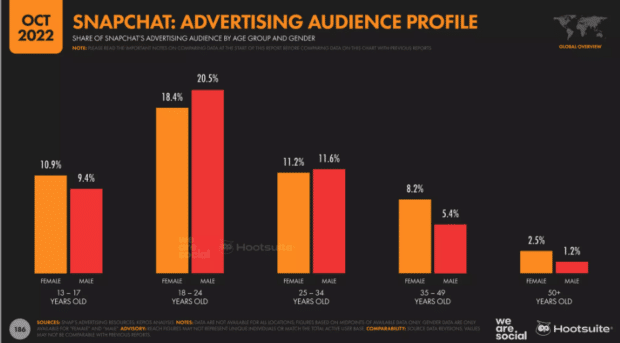
Source: Hootsuite Digital Trends Report
Single image or video ads
These ads look like organic Snapchat content and are a great format for many objectives, from brand awareness to driving a specific action. Any photo, GIF, or video can be an ad.
These ads are the “bread and butter” format that should be part of every campaign. Mix and match these with any of the other ad types below.
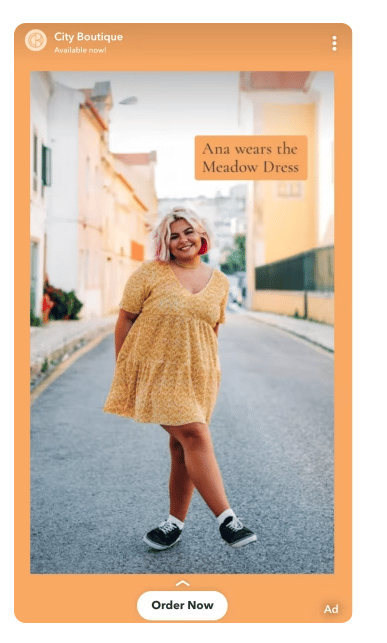
Source: Snapchat
Collection ads
Collection ads are used for ecommerce sales conversions. You must upload your product catalog to Snapchat Ads Manager to use this format. You can add it manually or connect to Shopify — or many other platforms — for live-syncing (recommended).
These ads showcase your products in a video or picture and allow you to feature 4 clickable product tiles along the bottom.
You can also create Dynamic Collection ads. Once you upload a product catalog and meet a few conditions with the Snap Pixel, Snapchat can automatically create dynamic product ads.
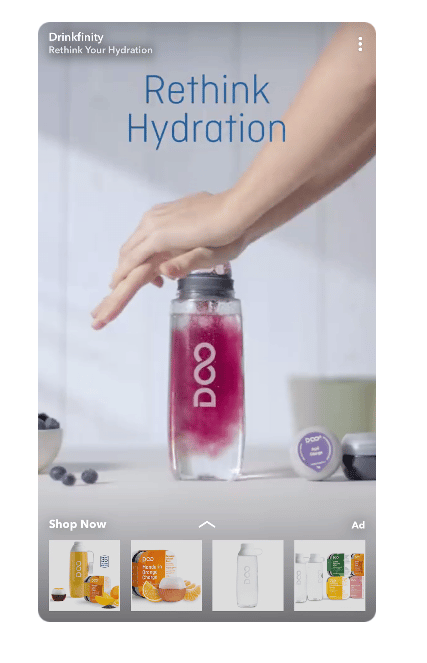
Source: Snapchat
Story ads
Story ads on Snapchat are single image or video ads — but in a series. You can have between 3 to 20 of these ads in a sequence, mimicking the experience of tapping through a friend’s Snapchat Story.
In addition to appearing between organic Stories, your Story ad is also listed on the Discover page, which can bring in great views.
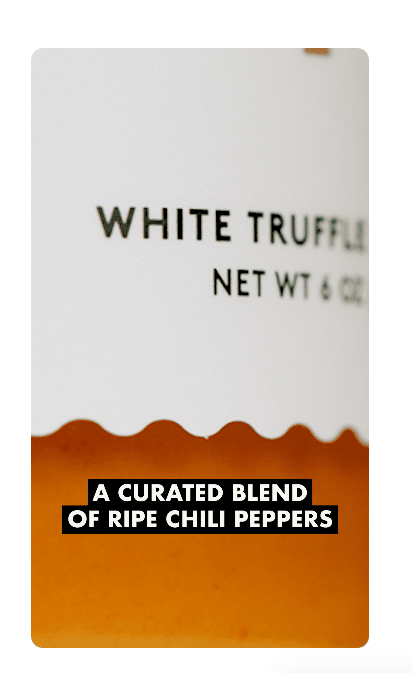
Source: Snapchat
Commercial ads
Want guaranteed ad views? Commercials are your answer. These video ads show up in Stories content, and the first six seconds are unskippable (though they can be up to three minutes long!).
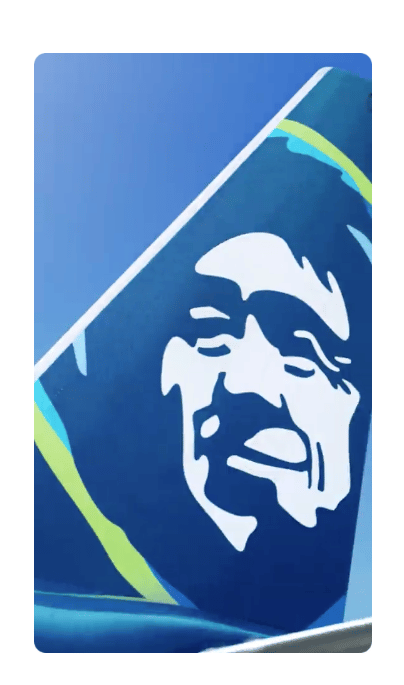
Source: Snapchat
AR Lens ads and Filter ads
Snapchat’s AR lens ads are like sponsored camera filters. You create a “face lens” or a “world lens,” and Snapchat users can apply them to their content.
Filter ads, meanwhile, are static image overlays users can add to Snaps.
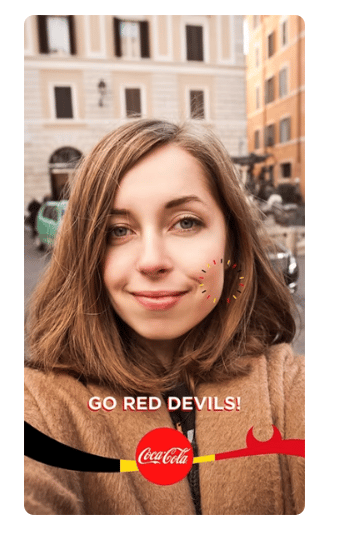
Source: Snapchat
Learn more about creating Snapchat ads here.
Linkedin ads
LinkedIn ads help your business with three types of marketing objectives:
- Awareness: Create more awareness of your company or brand.
- Consideration: Drive website visits, increase engagement, or encourage video views.
- Conversions: Collect leads and drive website conversions.
- Audience considerations: LinkedIn is much more business-oriented than the other social networks in this post. It offers targeting options based on professional qualifications like job title and seniority.
Audience considerations: LinkedIn is much more business-oriented than the other social networks in this post. It offers targeting options based on professional qualifications like job title and seniority.
Let’s get down to business.
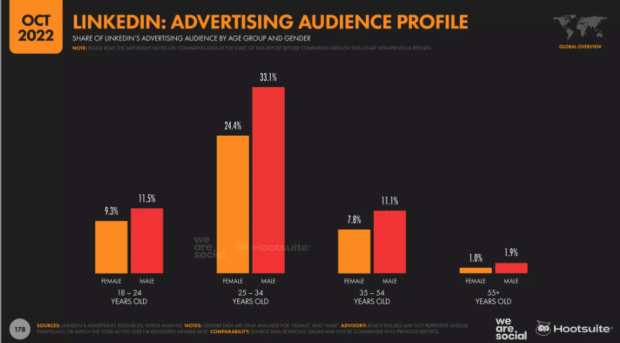
Source: Hootsuite Digital Trends Report
Native Ads
There are a variety of different formats of ads you can choose from under the Native ad umbrella. Pick between single images, carousels, document ads, video ads or event ads and then set your budget.
Whatever your style, it’ll appear right in the LinkedIn feed alongside organic content (though it will, of course, be marked as promoted content.)
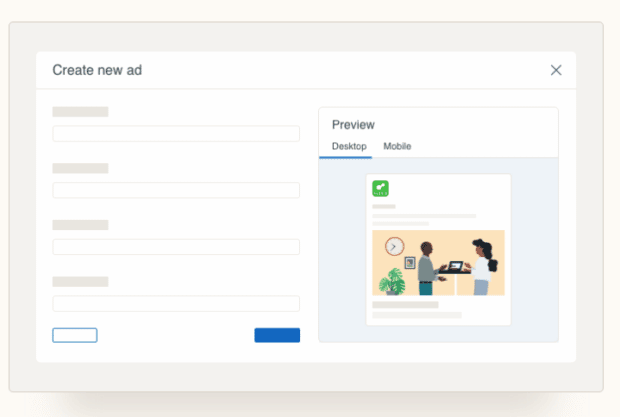
LinkedIn Messaging
Send direct, one-on-one messages to your target audience’s LinkedIn inbox. It’s like starting a personal chat with all your favorite people at once!
You can either send a personalized direct message or get interactive with a Conversation ad, where users are given a choose-your-own-adventure series of prompts.

Source: LinkedIn
Dynamic Ads
LinkedIn Dynamic ads are personalized automatically for every single person that sees them.
This AI magic trick allows you to automate individualized campaigns at scale, using personal data like the recipient’s company name, job title, photo, and more, gleaned from their profiles.
Maybe a little spooky? Or maybe just enough to grab their attention.
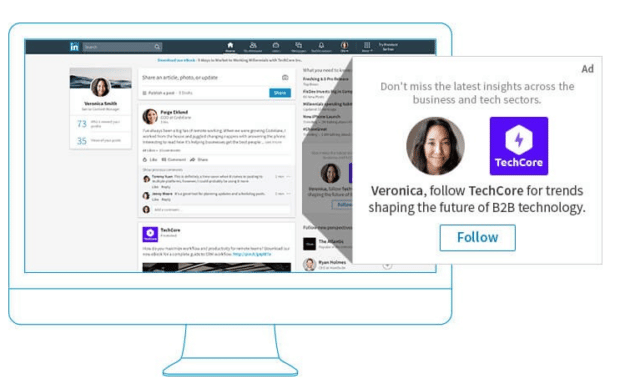
Source: LinkedIn
These are boosted posts — content created like you would as a regular user of LinkedIn, but then given a little paid boost to get in front of more people. (More about boosting LinkedIn posts here!)
They’ll appear right in the usual content stream, though they’ll be highlighted as promoted posts.
Text Ads
LinkedIn’s Text ads are as simple as it gets. Fine-tune your target to reach only the people you actually want, and only pay for those who click through.
If you want to reach a specific professional audience and have a clear value proposition that doesn’t need any razzle-dazzle to hammer your point home, this could be the option for you.
One note: they only appear to desktop users, not on mobile devices.
Pro tip: Create two to three variations of your campaign, both for A/B testing but also to show your many sides to your audience.
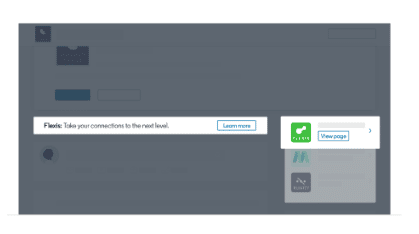
Source: LinkedIn
Get all the step-by-step instructions you need to set up your LinkedIn ads in our LinkedIn advertising guide.
Pinterest ads
Pinterest ads work with six types of business goals:
- Brand awareness
- Video view
- Consideration
- Conversions
- Catalog sales
Audience considerations: Pinterest has significantly more female users than males.
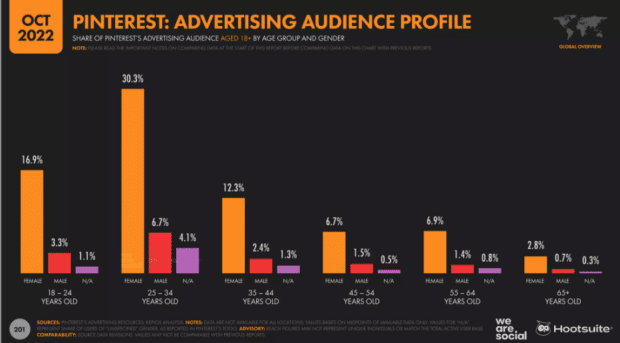
Source: Hootsuite Digital Trends Report
Advertising on Pinterest is refreshingly straightforward. Ads are just regular pins (whether static, video or catalogs) that you pay to show to your desired audience.
Paid Pins
Your paid pins will appear in users’ home feeds, category feeds, and relevant search results. They’ll be clearly labeled as “promoted.” Easy-peasy!

Get all the step-by-step instructions you need to set up your Pinterest ads in our Pinterest advertising guide.
YouTube ads
YouTube ads can help you work towards the following business goals:
- Awareness
- Consideration
- Action
Audience considerations: YouTube has more male than female users. The audience is well spread out among age groups up to 65.
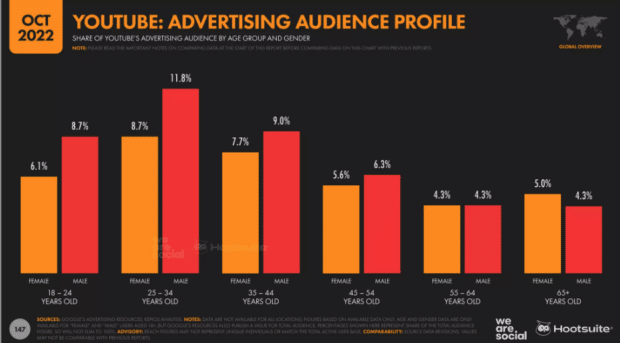
Source: Hootsuite Digital Trends Report
There are a few different video ad formats available on YouTube.
In-stream ads
Choose between skippable and unskippable (up to 15 seconds) for this option. These run before, during, or after videos across YouTube. You can reach hyper-detailed audiences or broad demographics.
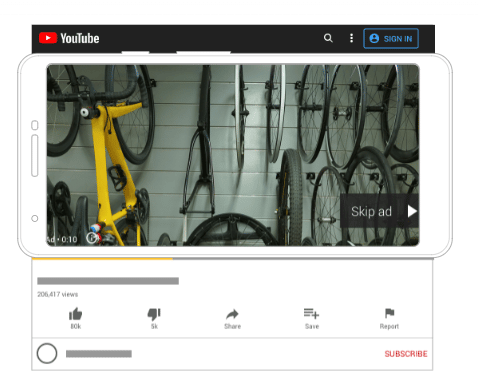
Source: YouTube
Bumper ads
These quick ads are unskippable and just six seconds long. They may play before, after, or during a video, much like the longer in-stream ads (above.) This is a great option if you’ve got something short and snappy to share.
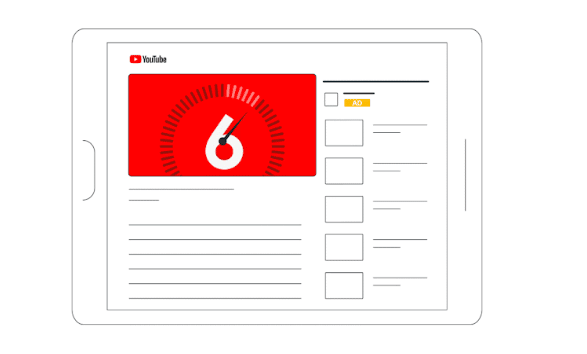
Source: YouTube
In-feed video ads
In-feed video ads on YouTube involve a thumbnail of your video next to some text, enticing viewers to click to watch the video. They may appear next to videos, as part of search results, or on the YouTube homepage on mobile.
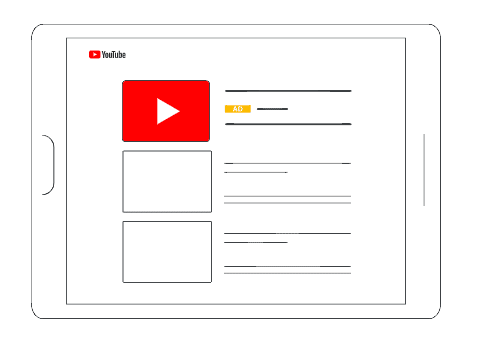
Source: YouTube
Masthead ads
Masthead ads are pretty VIP — they’re only available to book through a reservation with your Google sales rep.
It makes sense, since this featured ad appears at the top of the desktop site or mobile app and autoplays for up to 30 seconds. That’s what we call premium positioning, baby!
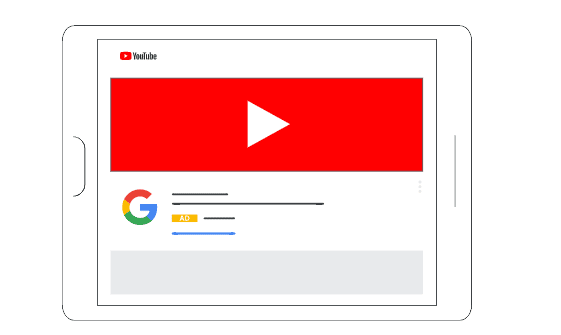
Source: YouTube
Learn more about Youtube advertising here.
TikTok ads
TikTok ads can help you work towards the following business goals:
- Website visits
- App installs
- Online sales
Audience considerations: TikTok users are youngsters! Almost seventy percent of TikTokers are under 34 years old.
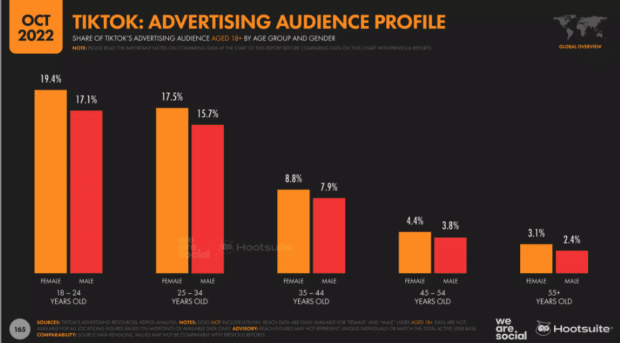
Source: Hootsuite Digital Trends Report
Though TikTok’s mantra is “don’t make ads, make TikToks,” they do, in fact, offer paid branded solutions. Read on for the full menu.
In-feed ads
Make a snappy video and pay to get it into the streams of the people! Of course, you’ll have the option to target specific demographics, but ultimately, your success will come down to whether or not your video captures users’ attention.
Take some inspiration from our guide to creating great TikToks here and start those cameras rollin’.
Pro tip: for maximum exposure, try the TopView option in the ad manager menu to make sure your video is played first when your target audience opens the For You Page.
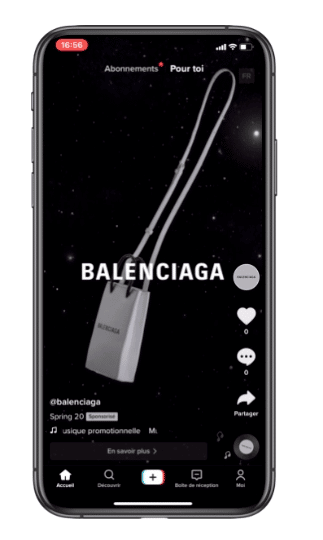
Source: TikTok
Branded hashtag challenge
Hashtags and challenges are the heart of TikTok. Join in by paying to get your branded challenge at the top of the trending pile. It’s engagement that goes beyond click-throughs — in fact, branded hashtag challenges have an average 8.5% engagement rate.
Ideally, your creative idea for a challenge will spark users to spread your brand’s vibe all over the TikTokosphere.
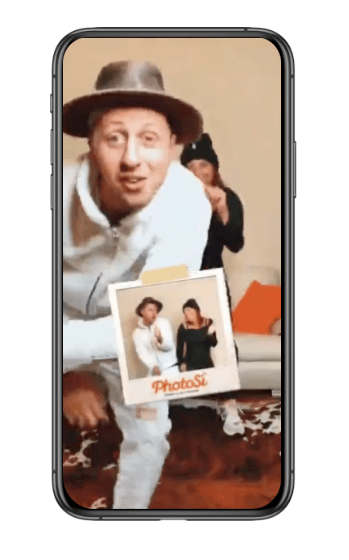
Source: TikTok
Branded effects
Craft and share your own branded effect to encourage users to play around and create their own unique content.
It’s a great way to incentivize user-generated content beyond your existing fanbase… plus, it’s more fun and interactive than a typical “where’s the skip button” ad.
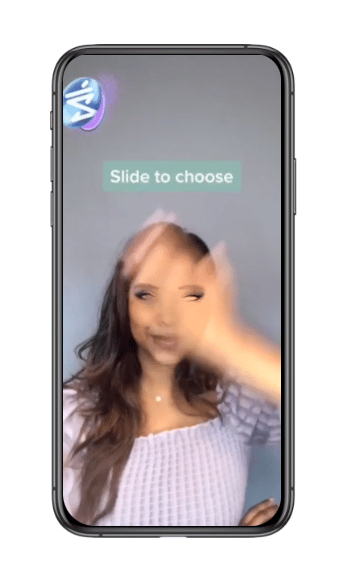
Source: TikTok
There are a few other types of hyper-specific opportunities for ad placements on TikTok’s wider family of apps (many of which are not available globally).
We dig into that more in our guide to TikTok ads — get into it!
The infuriating truth for each platform is: it varies! Budgets can be set on all of these social media sites to suit your own financial needs… so you could spend $5 or $50,000.
Results, of course, will vary accordingly — but the point is, there’s an almost infinite spectrum of pricing.
That didn’t stop us from breaking it all down by platform, though, so read on if you need to hear this sentiment again in a more specific context.
Facebook ads
There’s no hard and fast rule when it comes to Facebook ad budgets. The cost of Facebook ads depends on several variable factors, including audience targeting, ad placement, campaign duration, the competitiveness of your industry, time of year, location, and time of day.
Get a full breakdown of just how all of these factors impact Facebook ad costs here.
But one important takeaway: setting the right campaign objective is the most important thing you can do to control Facebook ad costs. (Getting this right will also help you achieve success in your goals.)
For example, on average, an “impressions” campaign objective costs $1.85 per click, while a campaign with a “conversions” objective costs $0.87 per click.
Learn more about how to advertise on Facebook here.
Instagram ads
The cost of Instagram ads is highly dependent on a variety of factors – there is no average or benchmark price. Some cost factors include your target demographic, industry, or time of year.
The best way to evaluate your budget is to set up a draft campaign in Ads Manager and look for the Audience Definition and Estimated Daily Results modules. This will tell you if your budget settings will be sufficient to reach your desired audience within your desired duration.
Learn more about Instagram ads and how to control your spending here in our Guide to Instagram Ads.
Twitter ads
There’s no minimum spend for Twitter ads, so you can pay as much or as little as you like. But that doesn’t mean the cost of Twitter ads is entirely up to you.
Like most social media platforms, Twitter runs its ads on an auction system. You set the bid you’re willing to pay for a certain action, as well as a daily budget for your campaign.
In general, the higher your bid, the more likely your ad will be served to your target audience. But this is not the only factor.
When considering which ads to serve, Twitter also considers how engaging your ad is. A high-demand audience will also be more expensive to reach.
That means you can reduce the cost of your Twitter ads by focusing on quality creative and appropriate ad targeting.
In terms of dollars and cents, most Twitter ad objectives cost between $0.50 and $3.00 per action, according to AdEspresso.
Learn more about how to set up a Twitter ad campaign here.
Snapchat ads
Feels like we’re repeating ourselves here: the exact cost of Snapchat ads varies wildly depending on your objectives, formats, audience, and so on.
One cold hard fact we can share, though, is that there is a minimum spend of $5. (Though what that $5 gets you really depends on what you’re shopping for. Sorry!)
More details about Snapchat Ad strategy and execution here.
Linkedin ads
Surprise, surprise: it depends! The cost of a LinkedIn ad will entirely depend on your specific campaign goals, your desired audience, and your ad format choice.
You start every campaign by placing a bid that suits your own budget. LinkedIn ads are then sold through an ad auction, where you’re in competition with everyone else angling to reach the same audience. The more popular the audience, the higher the price is going to get. The best way to get your cost down is to tweak your target audience.
Dig more into the science of LinkedIn ad pricing here, or back it up and get a full LinkedIn ads primer here.
Pinterest ads
Our guide to Pinterest advertising offers some firm-ish numbers: “While every campaign and ad format varies, the average cost of Pinterest ads in 2021 was $1.50 per click.”
So, sure, your final bill will vary wildly depending on how many clicks you get, what kind of ad you create, and who your target market is, but… hey, at least you’ve got a starting point, right?
Learn more about how to maximize your Pinterest ad spend here.
YouTube ads
There is no firm cost for a YouTube ad. We know that’s probably not the answer you want, but it’s true! So many factors come into play here that it’s impossible to even give a ballpark number. As YouTube itself says, “You’re in charge of how much you spend.”
You set a maximum cost-per-click you’re willing to pay, but your actual costs may even be lower, depending on how in-demand your desired audience or placement is.
Learn more about Youtube ads and costs here in our guide to Youtube advertising.
TikTok ads
There may not be a straight answer about how much TikTok ads cost, but there are some minimum budgets to work off of.
Since TikTok ads are based on a bidding model, daily budgets for campaigns are set at $50 USD.
Social media advertising examples to learn from
Okay, we know, we know, this has been a lot. But it’s time for a quick bit of inspo before we dive into some important tips.
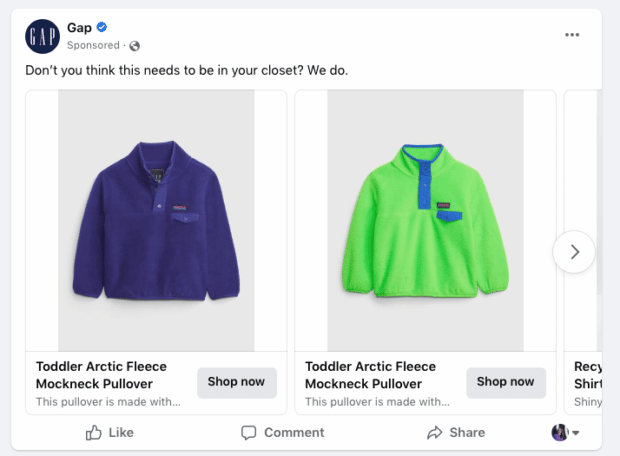
This Gap ad on Facebook takes advantage of the carousel format to showcase one product in multiple colors. (And yet… we want to buy them all?)
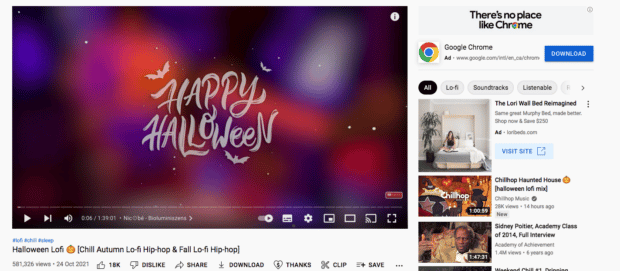
Manufacturers of this bed cleverly targeted people listening to Chill Hop — perhaps an audience of people who love feeling sleepy and cozy and are abnormally into bedtime.
Take some inspiration here to think outside the box about your target audience. What kind of content might they be consuming?
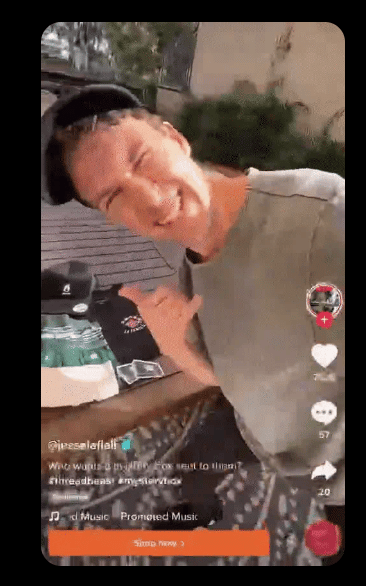
On TikTok, Threadbeast promoted a video showcasing its subscription box product by shooting it in a very authentic, unboxing-video-style way that would blend in seamlessly with organic content… while still standing out with an intriguing call to action: “Who wants a mystery box?”
It’s #NationalMilkDay and we’re delivering positive energy all day with Milk Grams🥛 📲
Comment below & tag a friend. You may get a special delivery today 👀🧵 pic.twitter.com/sWicXST9O4
— got milk? (@gotmilk) January 11, 2021
Got Milk used promoted Tweets to share videos of special “Milk Gram” deliveries it made as part of a campaign. Twitter users could tag a friend who might get a special IRL surprise and find themselves in the next promoted video. The circle of life!
The takeaway? Think about how you can blend real-life experiences with digital ones to generate content and spark delight.
1. Know what business objective you’re trying to achieve
It’s no accident that we start each section of this guide by reviewing the business objectives each type of social media ad can help you achieve. It’s awfully hard to achieve your goals if you don’t know what your goals are in the first place.
Understanding your ultimate goal is critical. It ensures you choose the right social network to advertise on and find the right advertising solution within that platform. Your goal will even guide your creative strategy.
2. Know your target audience
The ability to micro-target your ad campaigns is one of the key benefits of social media advertising. That’s why we’ve listed some audience considerations for each of the social networks.
Keep in mind that they all offer quite specific ad targeting. Know exactly who you’re trying to reach to take maximum advantage of these targeting options. This ensures you get the best bang for your advertising buck.
After all, there’s no point in advertising to soccer moms in Florida if your audience is young male video gamers in New Jersey. Developing audience personas can help you understand exactly which audience segments to focus on.
3. Let your organic posts inform your ads
You’re likely already posting content on Twitter, Facebook, and Instagram every day. Maybe LinkedIn and Snapchat, too.
Some of these posts will resonate with followers, while others won’t. Track which ones are being clicked, liked, shared and commented on. These high-performing messages make the best candidates for social ads.
If you’re branching out into a new network with your social media advertising, start small. Use what you’ve learned from your organic posts as a starting point. However, know that those lessons will not necessarily translate across social networks.
4. Pay for what matters: Impressions or engagement
To keep your budget under control, think about whether you want impressions or engagements.
In many cases, you’ll be paying by cost per thousand impressions (CPM) or cost per click (CPC). If you pay every time someone sees your ad (impressions), your message can cast a wide net. But if you’re paying for engagement, you only want people who are really interested in doing business with you to engage.
You don’t want to pay for engagements that are not relevant to your business goals. The wording of your ad should help people identify whether it’s for them.
Both engagement and impressions campaigns can be valuable for your business. You just need to choose the right one to align with your business goals so that you only pay for real business results.
Here’s some more information about which metrics to track to make the most of your social media marketing campaign.
5. Design your ads with mobile in mind
More than 3.25 billion active social media users access social networks on mobile devices.
That means most social media ads are viewed on mobile devices. Your mobile ads should be specifically designed for the small screen. Incorporate images that are easy to view on a pocket-sized device. (Unless, of course, you specifically choose desktop placement.)
If you have a brick-and-mortar business, you can use “geofencing” to target mobile users when they are in a specific zip code. This means they only see your ads when they are close enough to walk in your front door.
6. Test your ads to optimize performance
One of the great benefits of social ads is instant feedback. You can gauge the effectiveness of a sponsored post in minutes and follow up with advanced analytics reports.
The best practice is to test several ads with small audiences to determine what works best, then use the winning ad in the primary campaign.
Testing one ad against another to determine what works best and refine your strategy is known as A/B testing. It’s a critical part of your social media advertising efforts. We teach you how to do it in our guide to social media A/B testing.
7. Measure results — and report on them
Just as it’s important to know your goals before running an ad campaign, it’s important to measure results. This will let you know whether you’ve hit your targets. It shows you what worked and what didn’t so that you can improve going forward.
Measuring your results and having concrete data about the value your ads bring to the company (purchases, leads, and so on) is a key part of proving ROI.
And if you can prove that your ads are paying off, that will ensure you get the budget you need to continue your work.
The major social networks offer analytics to help you measure the results of ads. We’ve created in-depth guides on how to use them:
You can also use tools like Google Analytics and Hootsuite Impact to measure results across networks from a single dashboard. A social media report is a great way to track your results and look for great content to promote with social ads.
Why is social media advertising important?
Social media advertising can help you reach a new, hyper-specific audience for a fairly low investment. Organic reach can only get you so far, and spending some cold hard cash can help your content receive the attention it deserves.
Social ads let you target your ideal audience based on their behaviors, interests, demographics, and more. You can tweak variables and experiment to see what gets you the most action — even if you only have a small amount to spend.
You also get tons of data to view after the fact, so you can see clearly what worked and what didn’t with your campaign.
The bottom line? Social media advertising is important because it can be highly effective, direct and designed to fit your budget. Let’s see a billboard do all that.
What is the most effective social media advertising?
According to our Digital Trends research, Instagram’s advertising reach has outpaced Facebook this past year… which is staggering when you consider that ads reach over 72% of Facebook’s 3 billion monthly active users.
So if “effective” means “reach the most people,” then Instagram is your answer… but that may be oversimplifying it.
The more complicated answer is: it depends. The most effective social media advertising for your brand may be totally different from mine. Your goals and your unique audience mix will determine the right platform for you.
For instance, if you make a tool for scheduling Twitter posts (ahem) and want to increase your sales, then advertising on Twitter will probably get you further than a Snapchat campaign.
Take a look deep inside, and then check out this social media advertising stats report. Then you’ll see the most effective social media advertising has been inside of you all along.
You made it to the end! You deserve a treat. Here’s an owl flying around with a broomstick and frightening locals.
Now that your palate has been cleansed: may we interest you in a 30-day premium trial of Hootsuite? It’s a social media dashboard where you can schedule all your social media advertising in one place — just what an expert like you needs.
Save time managing your social media presence with Hootsuite. From a single dashboard you can publish and schedule posts, find relevant conversions, engage the audience, measure results, and more. Try it free today.
Get Started
Easily plan, manage and analyze organic and paid campaigns from one place with Hootsuite Social Advertising. See it in action.















![Toni Kroos là ai? [ sự thật về tiểu sử đầy đủ Toni Kroos ]](https://evbn.org/wp-content/uploads/New-Project-6635-1671934592.jpg)


